Solution Manual for Electric Machines and Drives, 1st Edition, by Ned Mohan
$35.00
Solution Manual for Electric Machines and Drives, 1st Edition, by Ned Mohan,,
You will receive this product immediate after placing the order
Solution Manual for Electric Machines and Drives, 1st Edition, by Ned Mohan,,
You are buying Solution Manual. A Solution Manual is step by step solutions of end of chapter questions in the . Solution manual offers the complete detailed answers to every question in at the end of chapter. Please download sample for your confidential.
PREFACE xi
CHAPTER 1 INTRODUCTION TO ELECTRIC DRIVE SYSTEMS 1
1.1 History 1
1.2 What Is an Electric-Motor Drive? 2
1.3 Factors Responsible for the Growth of Electric Drives 3
1.4 Typical Applications of Electric Drives 3
1.5 The Multi-Disciplinary Nature of Drive Systems 8
1.6 Structure of the 9
References 10
Problems 11
CHAPTER 2 UNDERSTANDING MECHANICAL SYSTEM REQUIREMENTS FOR ELECTRIC DRIVES 12
2.1 Introduction 12
2.2 Systems with Linear Motion 12
2.3 Rotating Systems 14
2.4 Friction 20
2.5 Torsional Resonances 21
2.6 Electrical Analogy 22
2.7 Coupling Mechanisms 23
2.8 Types of Loads 26
2.9 Four-Quadrant Operation 27
2.10 Steady State and Dynamic Operations 27
References 28
Problems 28
CHAPTER 3 REVIEW OF BASIC ELECTRIC CIRCUITS 31
3.1 Introduction 31
3.2 Phasor Representation in Sinusoidal Steady State 31
3.3 Three-Phase Circuits 38
Reference 43
Problems 43
CHAPTER 4 BASIC UNDERSTANDING OF SWITCH-MODE POWER ELECTRONIC CONVERTERS IN ELECTRIC DRIVES 46
4.1 Introduction 46
4.2 Overview of Power Processing Units (PPUs) 46
4.3 Converters for DC Motor Drives ð2VdvoVdÞ 52
4.4 Synthesis of Low-Frequency AC 58
4.5 Three-Phase Inverters 59
4.6 Power Semiconductor Devices 62
References 66
Problems 66
CHAPTER 5 MAGNETIC CIRCUITS 69
5.1 Introduction 69
5.2 Magnetic Field Produced by Current-Carrying Conductors 69
5.3 Flux Density B and the Flux f 71
5.4 Magnetic Structures with Air Gaps 74
5.5 Inductances 76
5.6 Faradays Law: Induced Voltage in a Coil due to Time-Rate of Change of Flux Linkage 78
5.7 Leakage and Magnetizing Inductances 81
5.8 Transformers 83
5.9 Permanent Magnets 88
References 90
Problems 90
CHAPTER 6 BASIC PRINCIPLES OF ELECTROMECHANICAL ENERGY CONVERSION 92
6.1 Introduction 92
6.2 Basic Structure 92
6.3 Production of Magnetic Field 94
6.4 Basic Principles of Operation 96
6.5 Application of the Basic Principles 98
6.6 Energy Conversion 99
6.7 Power Losses and Energy Efficiency 101
6.8 Machine Ratings 102
References 103
Problems 103
CHAPTER 7 DC-MOTOR DRIVES AND ELECTRONICALLYCOMMUTATED MOTOR (ECM) DRIVES 108
7.1 Introduction 108
7.2 The Structure of DC Machines 109
7.3 Operating Principles of DC Machines 111
7.4 DC-Machine Equivalent Circuit 117
7.5 Various Operating Modes in DC-Motor Drives 119
7.6 Flux Weakening in Wound-Field Machines 122
7.7 Power-Processing Units in DC Drives 123
7.8 Electronically-Commutated Motor (ECM) Drives 123
References 129
Problems 129
CHAPTER 8 DESIGNING FEEDBACK CONTROLLERS FOR MOTOR DRIVES 132
8.1 Introduction 132
8.2 Control Objectives 132
8.3 Cascade Control Structure 135
8.4 Steps in Designing the Feedback Controller 135
8.5 System Representation for Small-Signal Analysis 136
8.6 Controller Design 138
8.7 Example of a Controller Design 139
8.8 The Role of Feed-Forward 145
8.9 Effects of Limits 145
8.10 Anti-Windup (Non-Windup) Integration 146
References 147
Problems and Simulations 147
CHAPTER 9 INTRODUCTION TO AC MACHINES AND SPACE VECTORS 149
9.1 Introduction 149
9.2 Sinusoidally-Distributed Stator Windings 149
9.3 The Use of Space Vectors to Represent Sinusoidal Field Distributions in the Air Gap 156
9.4 Space-Vector Representation of Combined Terminal Currents and Voltages 159
9.5 Balanced Sinusoidal Steady-State Excitation (Rotor Open-Circuited) 164
References 172
Problems 172
CHAPTER 10 SINUSOIDAL PERMANENT MAGNET AC (PMAC) DRIVES, LCI-SYNCHRONOUS MOTOR DRIVES, AND SYNCHRONOUS GENERATORS 174
10.1 Introduction 174
10.2 The Basic Structure of Permanent-Magnet AC (PMAC) Machines 175
10.3 Principle of Operation 175
10.4 The Controller and the Power-Processing Unit (PPU) 185
10.5 Load-Commutated-Inverter (LCI) Supplied Synchronous Motor Drives 186
10.6 Synchronous Generators 187
References 191
Problems 191
CHAPTER 11 INDUCTION MOTORS: BALANCED, SINUSOIDAL STEADY STATE OPERATION 193
11.1 Introduction 193
11.2 The Structure of Three-Phase, Squirrel-Cage Induction Motors 194
11.3 The Principles of Induction Motor Operation 194
11.4 Tests to Obtain the Parameters of the Per-Phase Equivalent Circuit 215
11.5 Induction Motor Characteristics at Rated Voltages in Magnitude and Frequency 216
11.6 Induction Motors of Nema Design A, B, C, and D 218
11.7 Line Start 219
11.8 Reduced Voltage Starting (soft start) of Induction Motors 220
11.9 Energy-Savings in Lightly-Loaded Machines 220
11.10 Doubly-Fed Induction Generators (DFIG) in Wind Turbines 221
References 228
Problems 229
CHAPTER 12 INDUCTION-MOTOR DRIVES: SPEED CONTROL 231
12.1 Introduction 231
12.2 Conditions for Efficient Speed Control Over a Wide Range 232
12.3 Applied Voltage Amplitudes to Keep ^ Bms 5 ^ Bms;rated 235
12.4 Starting Considerations in Drives 239
12.5 Capability to Operate below and above the Rated Speed 240
12.6 Induction-Generator Drives 242
12.7 Speed Control of Induction-Motor Drives 243
12.8 Pulse-Width-Modulated Power-Processing Unit 244
12.9 Reduction of ^ Bms at Light Loads 248
References 249
Problems 249
CHAPTER 13 RELUCTANCE DRIVES: STEPPER-MOTOR AND SWITCHED-RELUCTANCE DRIVES 250
13.1 Introduction 250
13.2 The Operating Principle of Reluctance Motors 251
13.3 Stepper-Motor Drives 253
13.4 Switched-Reluctance Motor Drives 259
References 260
Problems 260
CHAPTER 14 ENERGY EFFICIENCY OF ELECTRIC DRIVES AND INVERTER-MOTOR INTERACTIONS 261
14.1 Introduction 261
14.2 The Definition of Energy Efficiency in Electric Drives 261
14.3 The Energy Efficiency of Induction Motors with Sinusoidal Excitation 262
14.4 The Effects of Switching-Frequency Harmonics on Motor Losses 265
14.5 The Energy Efficiencies of Power-Processing Units 266
14.6 Energy Efficiencies of Electric Drives 266
14.7 The Economics of Energy Savings by Premium-Efficiency Electric Motors and Electric Drives 266
14.8 The Deleterious Effects of The PWM-Inverter Voltage Waveform on Motor Life 267
14.9 Benefits of Using Variable-Speed Drives 268
References 268
Problem 269
Be the first to review “Solution Manual for Electric Machines and Drives, 1st Edition, by Ned Mohan” Cancel reply
Related products
Solution Manual
Understanding Business Nickels 10th Edition Solutions Manual
Solution Manual
Solution Manual for Psychology and Life 20th Edition by Gerrig
Solution Manual
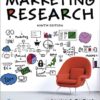


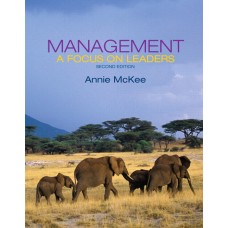
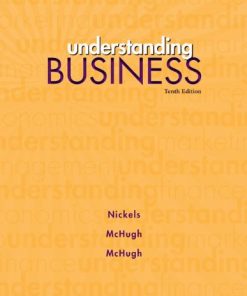
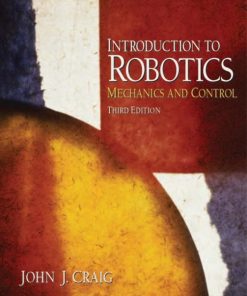

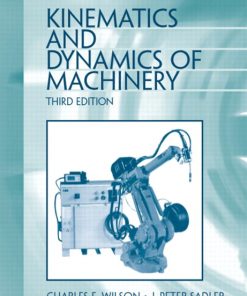

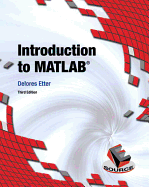
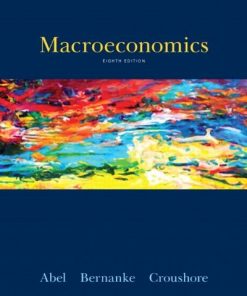
Reviews
There are no reviews yet.